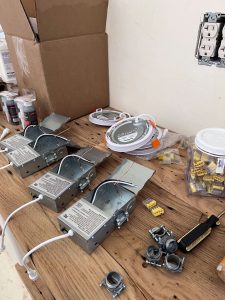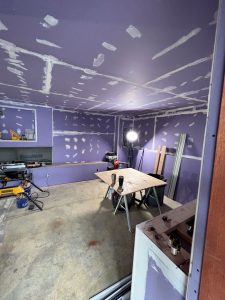September 4, 2025
How to Assess Home Repair Issues Like a Pro: A Homeowner’s Guide to Making Smart Decisions

When you notice a crack in your wall or a drip from your faucet, your first instinct might be to call a professional. While this isn’t wrong, understanding how to properly assess home repair issues can save you thousands of dollars and help you make decisions that truly benefit your home.
The Tradesman’s Dilemma: When Solutions Match Specialties
Here’s something most contractors won’t tell you upfront: tradesmen often see problems through the lens of their expertise. It’s not malicious—it’s human nature. The Hammer and Nail Syndrome
When you have a hammer, everything looks like a nail. Similarly, when a plumber visits your home, water damage might seem like a plumbing issue. An electrician might focus on rewiring solutions. A flooring contractor will naturally lean toward flooring replacements.
Consider Sarah’s experience: Her bathroom tiles were cracking near the tub. The first contractor suggested a complete tile replacement for $3,000. A second opinion revealed that simple caulking and minor grout repair would solve the underlying moisture issue for under $200.
The Hammer and Nail Syndrome
When you have a hammer, everything looks like a nail. Similarly, when a plumber visits your home, water damage might seem like a plumbing issue. An electrician might focus on rewiring solutions. A flooring contractor will naturally lean toward flooring replacements.
Consider Sarah’s experience: Her bathroom tiles were cracking near the tub. The first contractor suggested a complete tile replacement for $3,000. A second opinion revealed that simple caulking and minor grout repair would solve the underlying moisture issue for under $200.
Red Flags: When to Question a Recommendation
Watch for these warning signs that might indicate an oversized solution:- Immediate replacement suggestions without exploring repair options
- Vague explanations about why repairs won’t work
- Pressure to decide quickly or claims about “limited-time” pricing
- Solutions that seem disproportionately expensive compared to the visible problem
- Reluctance to explain the root cause of the issue
Smart Assessment Strategies for Homeowners
Start with Your Own Investigation
Before calling professionals, spend time understanding your problem:- Document everything with photos and notes
- Research common causes for your specific issue online
- Check multiple areas of your home for similar problems
- Note when the problem occurs (during rain, when using appliances, etc.)
The Three-Question Rule
When consulting with contractors, always ask:- “What’s causing this problem at its root?”
- “What are all my options, from basic repair to full replacement?”
- “What would you do if this were your home?”
Real-Life Examples: Lessons from the Field
The Window Replacement That Wasn’t Mike noticed drafts around his windows and called a window company. They quoted $8,000 for replacement windows. A handyman friend suggested weatherstripping and caulking first. The $150 solution eliminated 90% of the drafts. The Foundation “Emergency” Lisa found small cracks in her basement wall and panicked when the first contractor mentioned foundation issues requiring $15,000 in repairs. A structural engineer’s $300 consultation revealed normal settling cracks that needed simple monitoring and cosmetic repair. The HVAC Overhaul Tom’s air conditioner wasn’t cooling properly. The first technician recommended a $4,000 system replacement. The second discovered a clogged drain line—a $75 fix that restored full functionality.When to Seek Second Opinions
Getting multiple perspectives is crucial when:- Repair costs exceed 50% of replacement value
- The problem affects home safety (electrical, structural, gas)
- You’re quoted more than $1,000 for any single repair
- The contractor can’t clearly explain the problem’s cause
- Your gut tells you something doesn’t feel right

Alternative Solutions That Add Value
Smart homeowners look for repairs that do double duty:Functional Upgrades
- Replace old faucets with water-efficient models instead of just fixing leaks
- Install programmable thermostats when addressing heating issues
- Upgrade to LED fixtures when replacing old lighting
- Add storage solutions when fixing organizational problems
Aesthetic Improvements
Sometimes the “problem” is an opportunity:- Turn water damage repair into a bathroom refresh
- Use necessary wall repairs as a chance to update paint colors
- Transform worn flooring replacement into a style upgrade
Building Your Repair Assessment Toolkit
Essential Resources
- Multiple contractor contacts in each trade
- A reliable handyman for smaller issues
- Online research skills to understand common problems
- Basic tools for minor DIY investigations
- A trusted friend with home repair experience

Questions That Save Money
- “Can we repair this instead of replacing it?”
- “What’s the expected lifespan of this fix?”
- “Are there preventive measures to avoid future issues?”
- “What would a basic solution look like versus the premium option?”

Cost-Effective Decision Making
The 5-10-15 Rule
- Under $500: Get one quote and proceed if it makes sense
- $500-$1,500: Get two quotes and compare approaches
- Over $1,500: Get three quotes and consider waiting 24 hours before deciding
Value vs. Cost Analysis
Ask yourself:- Will this repair prevent bigger problems?
- Does the solution improve home value or functionality?
- Am I paying for convenience or necessity?
- What’s the cost of doing nothing?
Pitfalls to Avoid
The Panic Response
Don’t let fear drive expensive decisions. True emergencies in homes are rare. Most issues can wait for proper assessment and multiple opinions.The All-or-Nothing Mentality
Many problems have graduated solutions. You don’t always need the premium fix immediately. Sometimes a basic repair buys you time to plan and save for a better solution.The DIY Overreach
While DIY can save money, know your limits. Electrical, plumbing, and structural work often require professionals for safety and code compliance.
Building Long-Term Home Maintenance Relationships
Finding Trustworthy Contractors
Look for professionals who:- Explain problems clearly in plain language
- Show you the issue firsthand
- Offer multiple solution tiers
- Provide references from recent jobs
- Stand behind their work with warranties
The Value of Maintenance Relationships
Contractors who know your home’s history provide better service. They understand what’s been done before and can spot patterns that newcomers might miss.Making Your Final Decision
The 24-Hour Rule
For non-emergency repairs over $500, sleep on it. This cooling-off period often brings clarity and prevents impulse decisions.Trust Your Instincts
If something feels wrong about a recommendation, investigate further. Your intuition often picks up on red flags your conscious mind might miss.